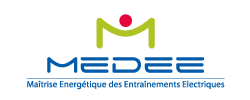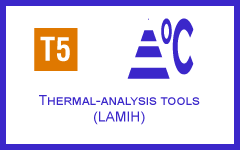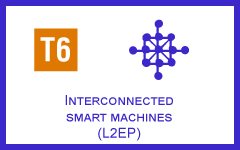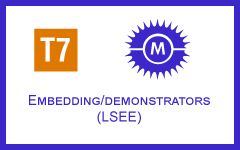This Task 1 is related to the development of high-yield static converter with a high power-density, high efficiency and using wide-bandgap components (Gallium nitride and Silicon Carbide). The two innovative aspects of this task are that this converter will operate in both high frequency and high temperature
T1.1: High frequency modeling, loss estimation
This first sub-section aims to developpe methods for high-frequency characterization and modeling of fast components (SiC and Gan) under constraints (currents, voltage, temperature, etc.). The models obtained will be used for the estimation of conduction losses and switching of fast components (T1.2) but also evaluation of the electromagnetic disturbances induced by the converters (T1.4). The thermal aspects of these components will require a strong interaction with the work carried out in task 5 of this project.
T1.2: Fast component conversion structures, low losses
Characterized Fast Components (T1.1) will be used in conversion structures to assess their energy performance. Objective: To determine the performance of the overall system, including active and passive components within a specific application. This task 1.2 provides an in-depth reflection on the choice of the structures most suited to high-frequency and low-loss operation. In order to improve the reliability of these high-frequency converters, monitoring devices capable of detecting, characterizing, isolating
T1.3: close command
Implement grid control circuits, specific MLI control strategies to meet the constraints imposed by the use of fast components in high-frequency converters (switching speeds, high temperature, EMC, etc.) Identification methods specific to hybrid systems will allow to experimentally model the first prototypes in order to analyze the real behaviors and to fix the numerical models of design. This task is preliminary to task 4.
T1.4: EMC (Electromagnetic Compatibility Directive) and filtering

EMC Filter
The filter elements constitute an important part of the volume of the converter. The increase in operating frequency allows a reduction in the dimensions of these elements. In order to increase the power density, the high frequency models developed in T1.1 will be used to optimize the various aspects: conductive and radiated emissions, connectivity (PCB), dimensioning of filtering based on magnetic toric components or planar, a method for measuring near field magnetic radiation of EMC filters and converters. PCB or bus bar connectors are a crucial element in the design of the high frequency converter which will require a specific study based on industrial collaboration.
At this stage, the choice of the operating frequency of the converter is a determining factor.























